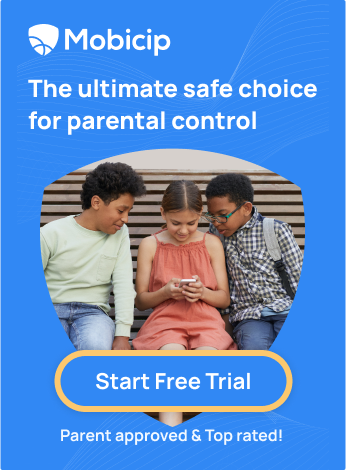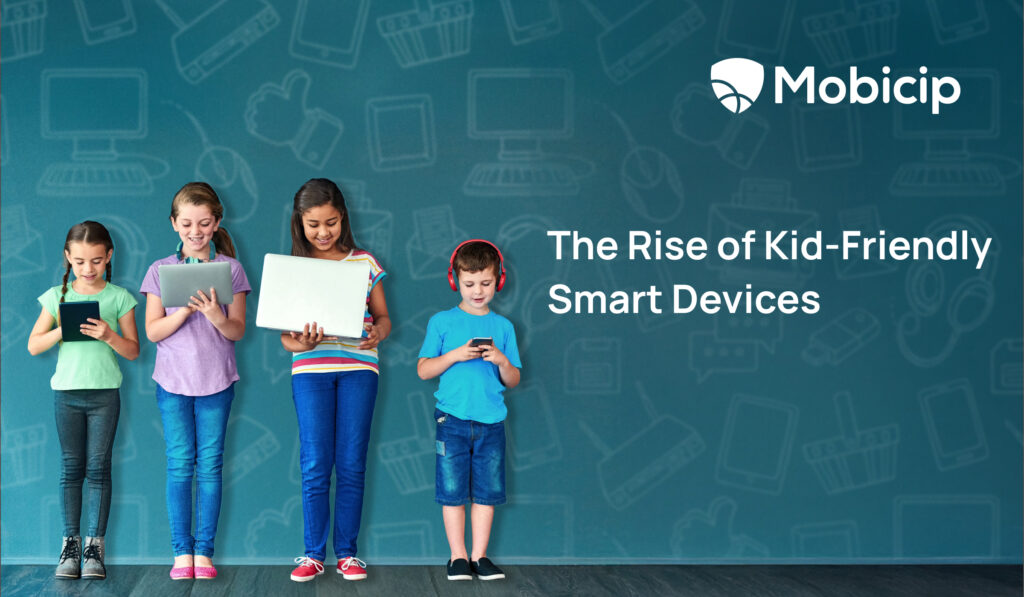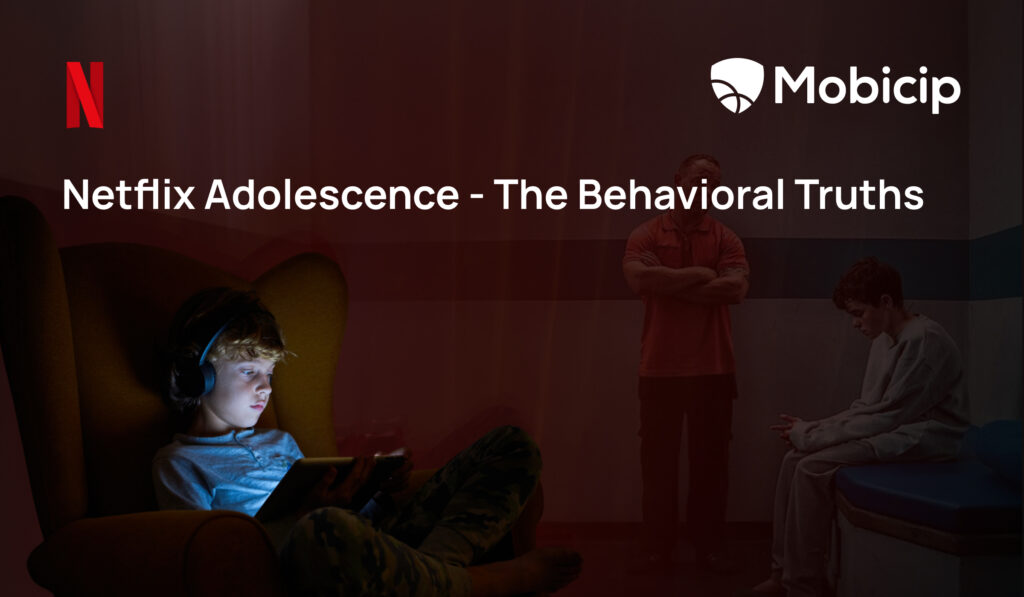The Rise of Kidfluencers – What Parents Need to Know
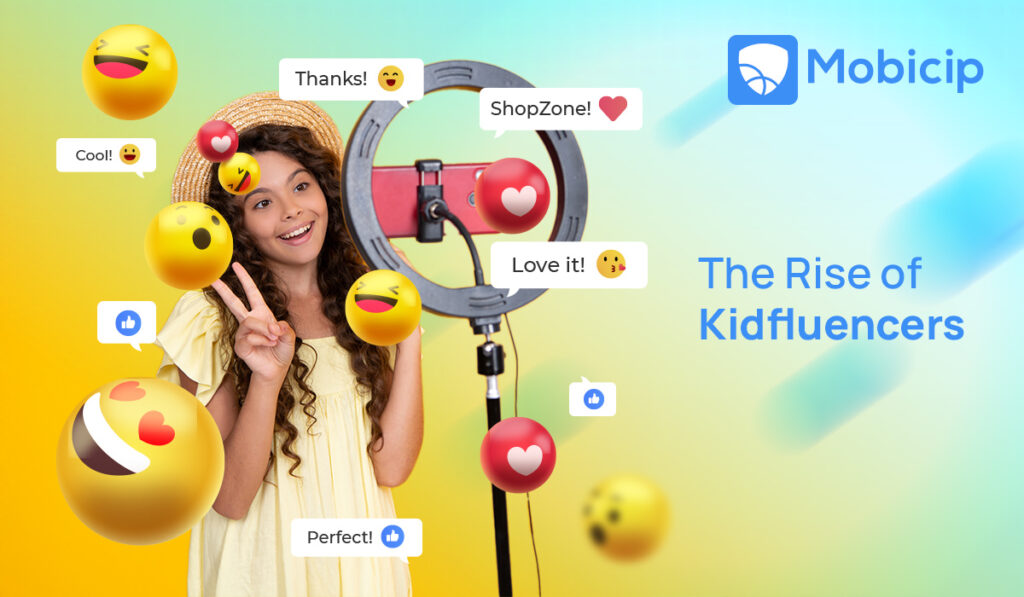
Kidfluencers are children who’ve gained significant online followings by creating content on platforms like YouTube, TikTok, and Instagram—often featuring toy reviews, family vlogs, or quirky challenges. While these pint-sized personalities light up screens across the world, the real producers are usually the parents, handling the filming, editing, and brand deals.
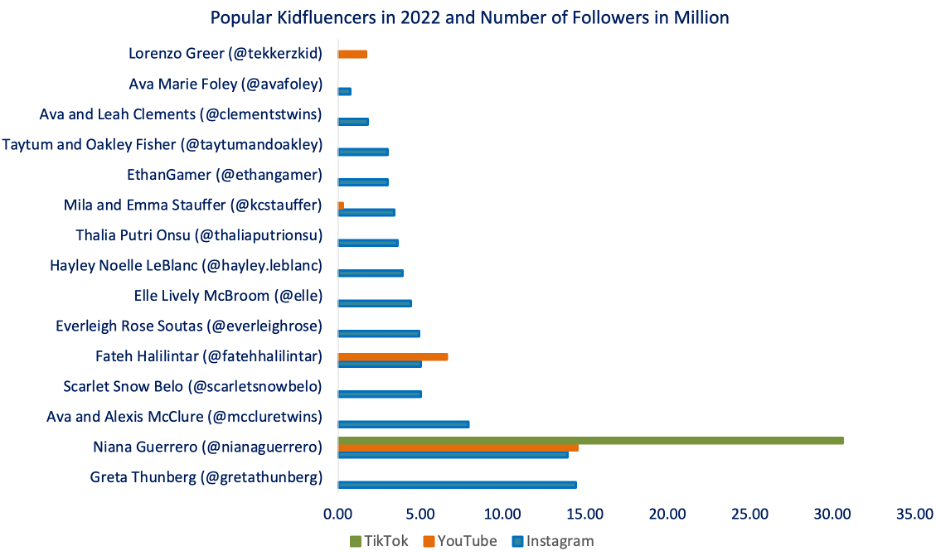
Data from Statista.
Behind the cuteness and charisma of kidfluencing lie real pitfalls. For the kidfluencers themselves, the line between play and performance gets blurred. This article explores the rise of kidfluencers—why it’s happening, what parents should be aware of, and how to protect children on both sides of the screen. It also discusses how parental control tools like Mobicip can help families navigate this fast-changing digital world safely and wisely.
Who Are Kidfluencers?
The term “kidfluencer” combines “kid” and “influencer,” and reflects a fast-growing trend where children—not yet old enough to drive or vote—are becoming miniature celebrities online. These are kids whose posts attract millions of young viewers—and often the wallets of brands eager to reach them. While the accounts often appear spontaneous and playful, the content is typically planned, produced, and managed by parents or caregivers.
How Kidfluencers Evolve
In most cases, it’s parents who initiate their child’s online journey—often unintentionally at first. A cute baby picture goes viral, a toddler’s giggle catches on, and suddenly a following builds. Encouraged by attention (and sometimes freebies), parents may then create dedicated accounts for their children.
Some kidfluencers are launched into the spotlight before they can even walk—or talk. Take Jerome, for example. His mother, Nina, was already an influencer during her pregnancy, and soon after he was born, she created an account for him. A single photo in a teddy bear outfit sent his follower count soaring. Today, Jerome has nearly 100,000 followers and earns brand deals worth around $20,000 a year.
In other cases, the motivation comes from the child. Ava from South Australia loves gymnastics and performing. She’s been on Instagram since she was eight, makes a modest monthly income, receives brand freebies, and has even launched her own activewear line with her mother’s help.
In either case, this phenomenon, often called “sharenting,” refers to parents publicly documenting their children’s lives on social media, sometimes casually, other times with commercial intent. While it can open doors to income and opportunities, it also raises complex concerns around privacy, consent, safety, and the increasingly blurred lines between play, performance, and work.
Why Brands Love Them
Kidfluencers have become one of the most effective tools in modern marketing. Their charm, authenticity, and relatability make them uniquely positioned to influence both their peers and their parents. Here’s why brands can’t get enough of them:
- Authentic and relatable: Kidfluencers come across as genuine, making their endorsements feel trustworthy.
- Highly persuasive: They’re often more convincing than professional actors, especially to their peers.
- Peer-driven influence: Children naturally gravitate toward other kids, making recommendations feel like friendly advice.
- Dual audience appeal: Parents also watch for product ideas and parenting tips.
- Two-for-one marketing: Brands gain access to both child and adult demographics through a single influencer.
Financially, the stakes are high. A kidfluencer with over a million followers can earn $20,000 or more for a single sponsored post. Even children with smaller followings—under 100,000—can command up to $4,000 per post. Ryan Kaji, the face of Ryan’s World, for example, was the platform’s highest‑paid creator in 2020, earning approximately US $29.5 million, not including revenue from his expansive branded merchandise and TV ventures. Some receive steady income, while others get free products, travel opportunities, and brand collaborations that would make even adult influencers envious.
The Ethical Concerns of Kidfluencing
As kidfluencers become more common, so do the ethical questions surrounding their rise.
Blurred lines between play and work for child influencers
For many kidfluencers, content creation is presented as play. But behind the camera, it’s often a structured routine. Filming schedules, retakes, and brand obligations can start to resemble work, even if it’s not formally recognized as such. The result? A childhood that’s carefully curated for public consumption.
Risks of exploitation
With no clear labor regulations for online content, kidfluencers may face intense pressure to stay entertaining and profitable. Unlike child actors, they’re often unprotected by labor laws, raising concerns about burnout, coercion, and unfair distribution of earnings. The emotional toll can be significant—and largely invisible to viewers.
Privacy concerns—data collection, exposure to online predators
Every upload reveals details about a child’s life—location, routines, emotions—creating a digital footprint that can be exploited. Kidfluencers are especially vulnerable to invasive data collection and unwanted attention from predators. Without safeguards, their innocence can be compromised long before they understand what privacy truly means.
Psychological and Social Impact on Children
Growing up in the digital spotlight can shape a child’s self-image, relationships, and emotional development, whether they’re creating content or just consuming it.
Dependence on social media validation
Kidfluencers often learn to equate likes, views, and comments with approval, shaping their self-esteem around online reactions. This can create a dependency on external validation, making it harder for children to develop a stable, internal sense of confidence and self-worth as they grow.
Mental health risks—anxiety, stress, and cyberbullying
Maintaining an online presence can lead to anxiety, perfectionism, and emotional burnout. These young creators may also be targeted by cyberbullies, trolls, or even adults with malicious intent. Without strong emotional support and boundaries, their mental health can suffer in ways that aren’t always visible to others.
Constant public exposure affects childhood development
Being constantly on display can limit a child’s opportunity to explore, make mistakes, and grow away from the public eye. It may interfere with their ability to build authentic relationships, learn social cues offline, and develop a strong sense of identity that isn’t tied to their online persona.
Risks to kids influenced by kidfluencers
Children who regularly watch kidfluencers may absorb unrealistic expectations about wealth, appearance, or popularity. They may compare their own lives to curated, commercialized content and feel inadequate or left out. This constant exposure can shape their values and self-image in ways that aren’t always healthy or grounded.
Legal and Regulatory Challenges
Kidfluencer content often appears spontaneous and playful, but it’s shaped by contracts, parental control, and marketing strategies. Yet, legal systems hesitate to classify this work as labour, fearing it may undermine genuine enjoyment. With platforms allowing very toddelers to be online stars, defining rights, responsibilities, and protections remains a complex challenge.
Some Global Laws
USA
At the National level, although the Children’s Online Privacy Protection Act (COPPA) focuses on safeguarding the personal data of children under 13, and the Kids Online Safety Act (KOSA) aims to reduce children’s exposure to harmful content, neither law specifically addresses the use of minors in monetized content or protects their earnings, labor rights, or vulnerability to exploitation in the world of kidfluencing.
A growing number of U.S. states are recognizing the need to regulate child participation in monetized social media content. While federal law has yet to address this space directly, several states are taking initiative.
- Illinois: The first U.S. state to pass legislation (Senate Bill 1782) in 2023 that requires influencers to allocate a portion of earnings into a trust for children featured in monetized content.
- Louisiana: The Child Performer Trust Act protects earnings for child actors in traditional media but does not apply to social media content created by parents.
- Minnesota: A new law (effective July 1, 2025) requires that a trust holds funds for minors in monetized content. It prohibits children under 14 from participating in content creation and mandates removal of content upon the child’s request.
- Other states: Arizona, California, Georgia, Maryland, Missouri, Ohio, Pennsylvania, and Washington have introduced Bills with similar provisions. While not all have passed yet, growing momentum suggests more states will follow.
France
France passed a law in 2020 protecting children featured in monetized social media under the Labour Code. Parents need government authorization, and children can request takedown of content without needing parental consent.
Australia
government is planning legislation to ban social media access for children under 16, with no parental consent loophole. Platforms will be held responsible for enforcement.
India
Current laws like the Child Labour Act (2016) and RTE Act (2009) need updating to account for children working in family-run content creation. The concept of “family enterprise” must evolve to protect education and earnings in the digital media space.
Need for Stricter Policies
Clear, enforceable policies are essential to protect kidfluencers’ right to privacy, education, and fair compensation. Their digital labour—whether playful or professional—contributes to real profit. Without legal safeguards, children risk exploitation, loss of autonomy, and long-term emotional harm, while their earnings remain unprotected and their futures uncertain.
What Parents Can Do to Protect Their Kids
While the world of kidfluencing continues to grow, parents still play the most powerful role in shaping their child’s digital life. Here are some practical ways to keep kids safe, balanced, and informed in an increasingly online world.
Set boundaries
Establish clear screen time limits and make sure the content your child creates or consumes is developmentally appropriate. Regularly review the channels they follow and engage in open conversations about the kinds of content they’re exposed to and why it matters.
Educate children about online safety and digital literacy
Teach children how to spot suspicious behavior, understand data privacy, and handle unwanted attention online. Help them develop critical thinking skills so they can recognize marketing tactics and curated content, and make smarter choices when engaging with social media.
Use parental control tools like Mobicip
Mobicip offers essential tools to help parents guide and protect children navigating the world of kidfluencing—whether your child is watching, creating, or both:
- App blocking and screen time limits – Helps prevent burnout in kidfluencers and overexposure in young viewers by encouraging healthy digital habits.
- Safe browsing filters – Protects kids from stumbling onto unsafe websites while researching, uploading, or watching influencer content.
- Real-time location tracking – Ensures kidfluencers aren’t inadvertently revealing their location through posts or livestreams.
- Activity reports and alerts – Gives parents visibility into the kind of content their child is watching or creating, allowing for timely conversations.
- YouTube monitoring – Keeps tabs on the influencer videos kids are watching or uploading, helping ensure content stays appropriate.
- Social media usage insights – Helps identify when screen time or content creation is getting excessive, allowing parents to step in and rebalance.
These features give families the tools they need to support kidfluencers responsibly and protect children influenced by curated online lives.
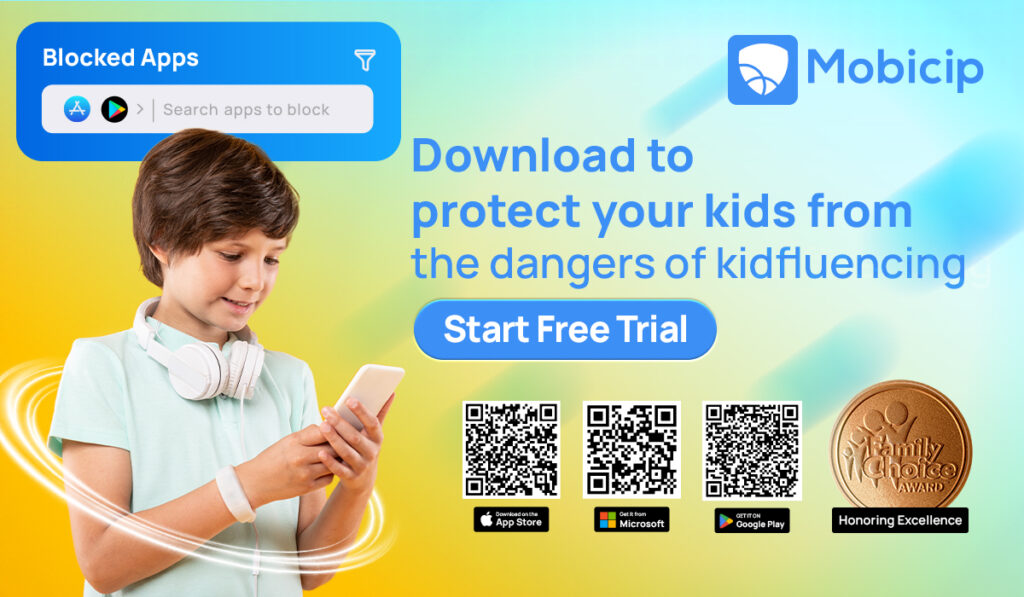
Encourage offline hobbies to balance digital exposure
Support your child’s interest in music, sports, crafts, or reading to provide a healthy counterbalance to screen time. Offline hobbies help build real-world skills, relationships, and self-worth that aren’t tied to digital performance or popularity.
The Future of Kidfluencers: What’s Next?
The world of kidfluencers is evolving rapidly. AI-generated child influencers are already making their debut, raising fresh questions about authenticity, ethics, and competition for human creators. At the same time, pressure is mounting for stricter regulations to protect real children involved in content creation—both in front of and behind the camera.
Brands and platforms are beginning to take notice. Some are adopting age-appropriate guidelines, while others are reevaluating partnerships in response to growing scrutiny from policymakers and the public. As awareness grows, we can expect a shift toward greater transparency and responsibility in how children are featured online.
For parents, staying informed and engaged is more important than ever. Whether your child wants to become a kidfluencer or just enjoys watching them, the key is open dialogue, smart boundaries, and the use of tools like Mobicip to maintain a safe, balanced digital life. The internet may be changing, but the need for thoughtful parenting remains constant.
Watch Video here

